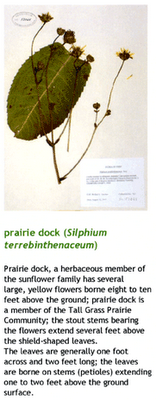When "Ugly" Distracts - Cleveland Trust Tower
Yesterday, a forum held at CSU's Levin College of Urban Affairs presented the history and relevance of Marcel Breuer's Cleveland Trust Tower, its opportunities for re-use, and alternatives from demolition. Sadly, the first public discussion to consider the reuse or preservation of the tower may have been too late. The effort to educate the community on the significance of Marcel Breuer's career, his design of the tower, and the challenges and advantages for rehabilitation should have happened concurrent with the County's architect selection process. Hardly a whisper from the public about the importance of keeping this building, whether as an important piece of existing urbanism or as a landmark architectural design, determined the fate of this highrise months ago. Even as the presentations from panelists representing County government, architecture, preservation, green building and construction technology concluded yesterday evening, there was no clear consensus of its design significance or, simply, of the advantages of adapting the structure for another use or another "look".
While the public forum has come late in the decision-making process (final recommendations are expected from the Commissioners in three to six months), it still provided an opportunity for the design community (represented by the panelists and a large percentage of the forum's guests) to show a certain amount of unanimity about whether or not to keep the building. Hampering this conclusion has been, from the earliest discussions about the tower, its appearance and design merits. The question of whether the Cleveland Trust Tower is "ugly or not" has led the community in circles, further leaving the fate of the building solely in the hands of Commissioners who see a dark and oppressive building - an unsuitable image for the requirements of the County, which aim to paint as rosy an image of itself for their constituents (a major reason the site was chosen in the first place - the location of one of the universally-loved icons in the City, the classically-designed Cleveland Trust Rotunda).
I would suggest that instead of debating the design merits (of which there are argueably few and at less than forty years since its completion, are difficult to determine anyway) a serious decision should be made about the importance (or not) of retaining a piece of the city which took an incredible amount of energy and effort to create, remains structurally-solid and reasonably achievable to reoccupy, and is sited respectfully to adjacent buildings and to pedestrians at street-level. While stylistically there are infinate variations of new construction, adaptive re-construction or preservation at the site (of which the public need not be concerned about immediately), there are only two choices to decide the future of the Tower's framework: the structure should remain or the structure should be dismantled and placed in landfill. Consensus that the structure (in whatever form) should remain, will be the only chance the tower will survive.
IF efforts to retain the Tower are successful and the County Commissioners begin to seriously consider its reuse, incredible opportunity presents itself for creative adaptation of Breuer's Tower, one of many late-modern brutalist structures that have fallen out of favor in recent decades. I have yet to be convinced of Cleveland Trust Tower's historical significance, however, respect the influence of Marcel Breuer in modern design and commend his exploration of precast concrete design and its role in re-creating envelopes for skyscrapers - a departure from the more-than-common curtain walls that define Mies' predecessors in mid-century American cities.
My vision for the new County administration headquarters would retain the structural frameword of the existing tower, make required floorplate additions on Euclid Avenue and south of the tower on East Ninth Street. The curtain wall, after removal for asbestos remediation, would return in another form: partial replacement of Breuer's panels (located appropriately in response to solar conditions - likely at the south elevation), and installation of a modular precast and glass curtain wall on remaining elevations (an attempt to successfully re-interpret Breuer's concept in the twenty-first century, integrate with the deep-set existing panels, and fashion an image reflecting the cycle of rebirth of a City that continues to re-tool). The challenge to Kohn Pederson Fox's design team would be daunting, requiring respectful adaptation of one of the works of a Modern master while creating a landmark that can be beloved timelessly as the Rotunda has. The decisions of the County would be admired, investing heavily in local labor and materials for the renovation of the Tower and Rotunda (opposed to new construction which requires significant international production), and standing behind Cleveland as a city that needs not to raze the values and accomplishments of earlier generations to reach prominence once again.
For further information, read Steven Litt's, Art museum values style that county wants to junk, published in the Plain Dealer last week, CSU Levin College Forum's Love It/Hate It? Renovate It/Raze It? A Public Forum on the Breuer Tower (a video of the event is archived somewhere on the site), Breuer Building Forum; Bias Abounds at Improvised Schema, and a gallery of images at ClevelandSkyscrapers.com.
(Of particular interest, compare the debate surrounding the Lollipop Building designed by Edward Durell Stone at 2 Columbus Circle in New York City which is under reconstruction.)
EDIT 11/21/06. See a gallery of Tower images at ClevelandSkyscrapers.com.
While the public forum has come late in the decision-making process (final recommendations are expected from the Commissioners in three to six months), it still provided an opportunity for the design community (represented by the panelists and a large percentage of the forum's guests) to show a certain amount of unanimity about whether or not to keep the building. Hampering this conclusion has been, from the earliest discussions about the tower, its appearance and design merits. The question of whether the Cleveland Trust Tower is "ugly or not" has led the community in circles, further leaving the fate of the building solely in the hands of Commissioners who see a dark and oppressive building - an unsuitable image for the requirements of the County, which aim to paint as rosy an image of itself for their constituents (a major reason the site was chosen in the first place - the location of one of the universally-loved icons in the City, the classically-designed Cleveland Trust Rotunda).
I would suggest that instead of debating the design merits (of which there are argueably few and at less than forty years since its completion, are difficult to determine anyway) a serious decision should be made about the importance (or not) of retaining a piece of the city which took an incredible amount of energy and effort to create, remains structurally-solid and reasonably achievable to reoccupy, and is sited respectfully to adjacent buildings and to pedestrians at street-level. While stylistically there are infinate variations of new construction, adaptive re-construction or preservation at the site (of which the public need not be concerned about immediately), there are only two choices to decide the future of the Tower's framework: the structure should remain or the structure should be dismantled and placed in landfill. Consensus that the structure (in whatever form) should remain, will be the only chance the tower will survive.
IF efforts to retain the Tower are successful and the County Commissioners begin to seriously consider its reuse, incredible opportunity presents itself for creative adaptation of Breuer's Tower, one of many late-modern brutalist structures that have fallen out of favor in recent decades. I have yet to be convinced of Cleveland Trust Tower's historical significance, however, respect the influence of Marcel Breuer in modern design and commend his exploration of precast concrete design and its role in re-creating envelopes for skyscrapers - a departure from the more-than-common curtain walls that define Mies' predecessors in mid-century American cities.
My vision for the new County administration headquarters would retain the structural frameword of the existing tower, make required floorplate additions on Euclid Avenue and south of the tower on East Ninth Street. The curtain wall, after removal for asbestos remediation, would return in another form: partial replacement of Breuer's panels (located appropriately in response to solar conditions - likely at the south elevation), and installation of a modular precast and glass curtain wall on remaining elevations (an attempt to successfully re-interpret Breuer's concept in the twenty-first century, integrate with the deep-set existing panels, and fashion an image reflecting the cycle of rebirth of a City that continues to re-tool). The challenge to Kohn Pederson Fox's design team would be daunting, requiring respectful adaptation of one of the works of a Modern master while creating a landmark that can be beloved timelessly as the Rotunda has. The decisions of the County would be admired, investing heavily in local labor and materials for the renovation of the Tower and Rotunda (opposed to new construction which requires significant international production), and standing behind Cleveland as a city that needs not to raze the values and accomplishments of earlier generations to reach prominence once again.
For further information, read Steven Litt's, Art museum values style that county wants to junk, published in the Plain Dealer last week, CSU Levin College Forum's Love It/Hate It? Renovate It/Raze It? A Public Forum on the Breuer Tower (a video of the event is archived somewhere on the site), Breuer Building Forum; Bias Abounds at Improvised Schema, and a gallery of images at ClevelandSkyscrapers.com.
(Of particular interest, compare the debate surrounding the Lollipop Building designed by Edward Durell Stone at 2 Columbus Circle in New York City which is under reconstruction.)
EDIT 11/21/06. See a gallery of Tower images at ClevelandSkyscrapers.com.








